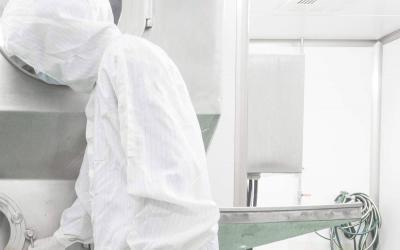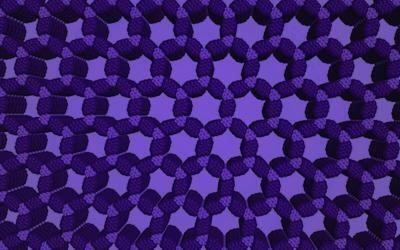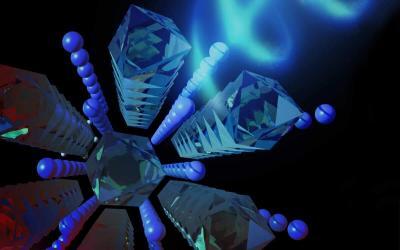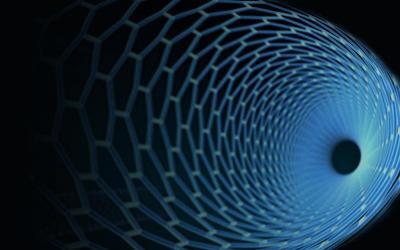HPAPI Facility launches for production of the highest class of HPAPI
Minakem’s HPAPI production will be carried out with an Occupational Exposure Limit (OEL) below 0,1μg/m3/8h. This emphasis on Environment, Health and Safety (EHS) reflects Minakem’s more than 20 years’ experience in continuously monitoring and controlling hazardous working environments, marking its leadership in this area.
Solid Polymer Electrolyte for Lithium Batteries Increased Safety & Performance
Specifically, Zhu and his research team developed a solid polymer electrolyte that can be used in lithium ion batteries to replace the current liquid electrolyte to improve the safety and performance of lithium batteries.
New State-of-the-Art Plasma Manufacturing Facility
Shire plc, the global biotechnology leader in rare diseases, announced today that the United States Food and Drug Administration (FDA) has approved the company’s first submission for its new plasma manufacturing facility near Covington, Georgia for the production of GAMMAGARD LIQUID® [Immune Globulin Infusion (Human)] 10% Solution, a replacement therapy for primary humoral immunodeficiency (PI).
New Covalent Organic Frameworks with Precise Control
covalent organic frameworks (COFs), were discovered in 2005, but their quality has been poor and preparation methods are uncontrolled. Now a Northwestern University research team is the first to produce high-quality versions of these materials, demonstrate their superior properties and control their growth. The researchers developed a two-step growth process that produces organic polymers with crystalline, two-dimensional structures.
X-ray laser opens new view on Alzheimer proteins
A new experimental method permits the X-ray analysis of amyloids, a class of large, filamentous biomolecules which are an important hallmark of diseases such as Alzheimer’s and Parkinson’s. An international team of researchers headed by DESY scientists has used a powerful X-ray laser to gain insights into the structure of different amyloid samples.
qFLASH-A 3D optical measurement system by Hexagon Manufacturing Intelligence
qFLASH-A is a compact and economical 3D optical measurement system designed for use in smaller automated shop-floor inspection cells. Compatible with a wide range of industrial robots including small-load and collaborative robot systems, qFLASH-A measurement cells have a small footprint and offer an affordable way to automate dimensional data capture for all kinds of part.
Juniper Pharma Services expands laboratory facilities
Juniper Pharma Services (JPS), a Contract Development and Manufacturing Organisation (CDMO) specialising in the development of challenging small molecules, has announced a significant expansion to its UK-based drug development and clinical trial manufacturing facilities.
Merck KGaA Expands Chinese Business
Merck KGaA, Darmstadt, Germany today announced today announced moves designed to pave the way for an even more successful future in China. Merck KGaA, Darmstadt, Germany, a leading science and technology company, today announced today announced moves designed to pave the way for an even more successful future in China.
Novacap Expands Pharmaceutical Offering with Acquisition of PCI Synthesis
Novacap, a worldwide player in pharmaceutical synthesis and advanced specialties, announced today that it has signed an agreement to acquire Boston-based PCI Synthesis, a leading U.S. pharmaceutical contract development and manufacturing organization (CDMO), further reinforcing Novacap’s capabilities and offering for the pharmaceutical industry.
New Crystal Discovery has Highest Optical Anisotropy Levels
Place a chunk of the clear mineral Iceland spar on top of an image and suddenly you’ll see double, thanks to a phenomenon called double refraction — a result of a quality of the crystal material called optical anisotropy. Beyond just a nifty trick, materials with optical anisotropy are vital for a variety of devices such as lasers, liquid-crystal displays, lens filters and microscopes.
Broadcom Extends Server Storage Offering
Broadcom Inc. today announced it is extending its collaboration with Hewlett Packard Enterprise (HPE) in server storage offerings and will showcase them this week at HPE Discover. Broadcom will highlight benefits of the SFF-TA-1001 specification commonly known as the U.3 reference platform with a U.3 universal drive cage demonstration featuring Toshiba U.3-enabled NVMe™, SAS, and SATA drives.
Harry Potter had Magic. We have Metamaterials.
Metamaterials are artificially engineered materials. Scientists create them by combining multiple elements from composite materials such as metal and dielectric. The result is an entirely new material with properties not found in nature.












